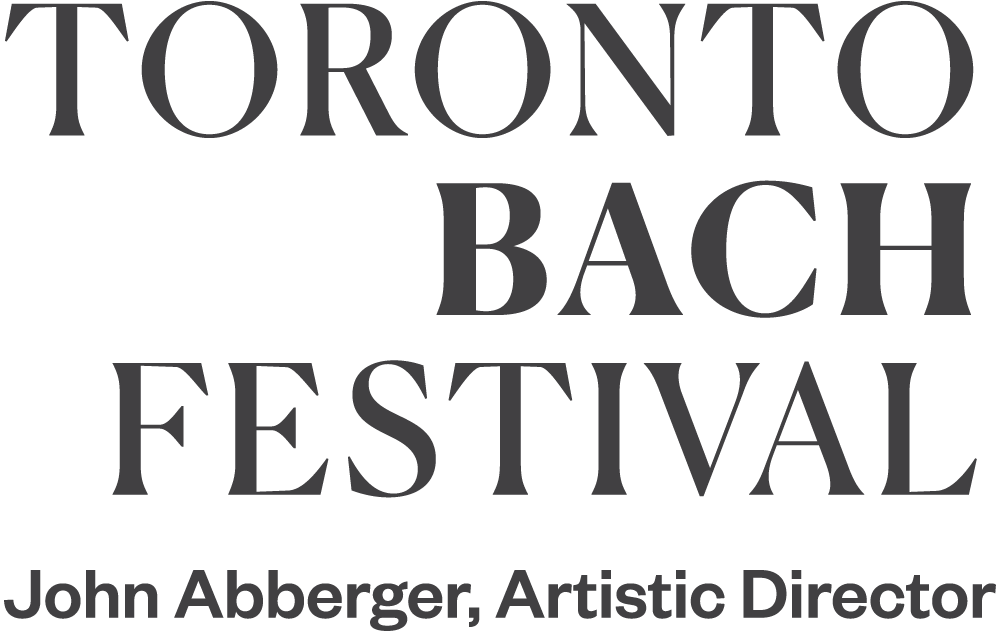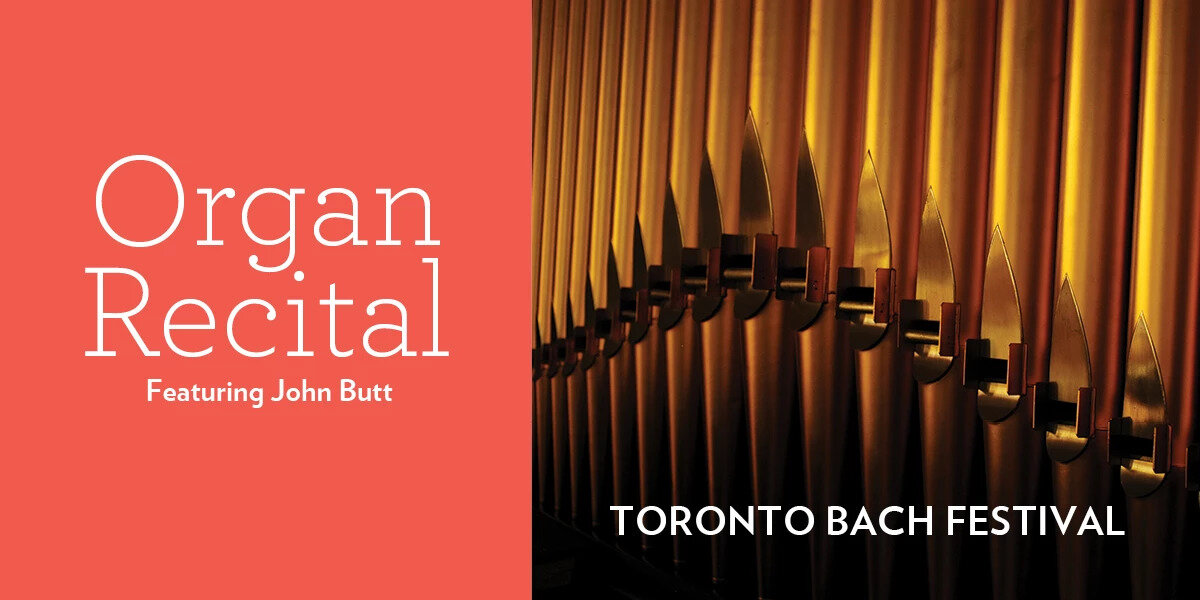Bach’s Organ Music: Imaginative, Innovative, Sublime
As I mentioned in the last blog post, I will continue to lead you through the 2020 Toronto Bach Festival with a discussion of each of the concerts that had been planned, together with some suggested listening links to YouTube. This week we will take a brief look at the rich repertory of organ works, as we imagine the organ recital that John Butt was preparing for us.
Most Bach lovers have a favourite corner of the repertory. It might be Brandenburg Concertos, or some of the great vocal music. One of the founding principles of the Toronto Bach Festival is to give our audiences as complete an understanding as possible of Bach’s achievement as a composer, and so it is essential that we become familiar with music from all of the genres in which he worked: vocal works, instrumental works, and keyboard works. The pursuit of this well-rounded picture is why we always have a keyboard recital at the festival. The works for organ and harpsichord represent a significant portion of Bach's output, and include some of his most inventive creations.
We want to celebrate all of Bach’s music, and have adopted the tradition of alternating the keyboard concerts between organ and harpsichord each year. And while I love the harpsichord music, the organ music has always had a special place in my heart. I first heard this music as a child when the organist at the church I attended played some of these works in the service (including the Prelude and Fugue in B minor, see below). Later, when I was in high school, I discovered an LP of some of these works in my father’s record collection, and was struck by their beauty and power.
I fervently believe that there is no substitute for the experience of any live performance. One experiences the music and the performance in a specific performance space, and the total effect is something that simply cannot be captured on a recording (although recordings do have their uses, as we all know). This phenomenon is even more apparent in the case of an organ concert, because it is impossible to separate the sound of an organ from the space in which it is installed. Bear in mind that in the 18th century a large pipe organ was one of the most sophisticated and extraordinary creations that existed. And when a beautifully crafted organ is expertly designed for a specific (and excellent) acoustic, and when a masterful artist performs a great work of musical art, the result can be sublime. We had planned the organ recital at this year’s festival to take place at St. Andrew’s Presbyterian Church on King St. The beautiful organ by Karl Wilhelm is just such a magnificent instrument, and under the hands and feet of John Butt, I knew we were in for one of the great organ experiences.
We are not able to have an experience like this at the moment, but technology will offer us a small compensation, in the form of recordings made on some of the great baroque organs in Europe. Although I do not have an example of one of the surviving organs that Bach is known to have played, several of the organs in the recordings below are instruments that have survived from Bach’s time, and are representative of the organs with which he was familiar.
I hope you enjoy this selection of Bach’s organ music inspired by the concert that was to have been at the fifth anniversary Toronto Bach Festival. I look forward to my next post when I will give you a brief introduction to the Sonatas and Partitas for solo violin.
----
I first met John Butt in the early 1990s, in the San Francisco bay area. I was a founding member of the American Bach Soloists, and made frequent trips there to perform with them. Having been recently been appointed to a position on the musicology faculty at the University of California at Berkeley, John quickly became an important part of the musical scene in the Bay Area, and since he had already achieved some recognition as a Bach scholar, working with ABS was a natural fit. The intelligence and enthusiasm he brought to the music was a joy to behold.
I lost touch with John when he left California to take up a prestigious position at Cambridge University in England, and from there he moved on to Glasgow, where he is currently Gardiner Chair of Music at the University of Glasgow. Since moving to Glasgow, John has founded a period-instrument ensemble called the Dunedin Consort, and they have been very active performing a lot of Bach’s works, always with attention to the latest performance practice research.
When I began to plan the fifth anniversary festival, I thought of John as the ideal person to direct the Mass in B minor. John and I share an understanding of period performance practice, particularly with regard to the number of vocalists for the choral works, and I knew his approach to performing the Mass would fit well with our artistic values. John has not performed in Toronto, and I thought it would be wonderful to introduce this great artist to our Toronto audience. We still hope to bring John Butt to Toronto, and are currently working on organizing the 2021 festival, in the hope that we can share his art with our audience.
John Butt on why the music of Bach is extraordinary.
The programme that John and I had planned opens with the Prelude and Fugue in G major, BWV 541. There is scant recorded evidence of Bach’s performances on the organ, but we may safely guess that he enjoyed performing on the relatively new organ in the University church, St. Paul’s, built by Johann Scheibe in 1717. With fifty-three stops on three manuals and pedals it was one of the largest and finest organs in Germany. Bach himself had examined the instrument at the invitation of the university rector in December 1717 (while still in the service of Prince Leopold in Köthen), and had praised it “especially for its rare stops which were newly made and could not be found in many organs.”
We can only imagine that when he took up residence in Leipzig in 1723 he must have enjoyed having regular access to such a fine organ to strike his imagination. Although there is speculation that some of the organ works were composed during Bach’s tenure in Weimar, there is an autograph fair copy of the Prelude and Fugue in G major dating from ca. 1733. Listen to this performance by Ernst-Erich Stender performing it on a reconstructed organ in Lübeck (the original sadly destroyed in the Second World War), the church where one of Bach’s important predecessors Dietrich Buxtehude, spent his career.
Prelude and Fugue in G major, BWV 541
Ernst-Erich Stender at the Totentanz Organ (restauration) at the Marienkirche in Lübeck, Germany.
The programme continues with the Concerto in D minor, BWV 596. This work will be familiar to many as the Concerto for two violins in D minor by Vivaldi, the 11th concerto from the Opus 3 set. It is fascinating to observe the way in which the nascent music publishing industry greatly increased the dissemination of music across Europe, facilitating the exchange of music far greater that which could be achieved by exchanging hand-copied manuscripts, and jump-starting the creation of a common culture of European music. Vivaldi’s Opus 3 was published in Amsterdam by Etienne Roger in 1711. Bach was clearly intrigued by these compositions, and studied the structure of the works by transcribing them for organ and harpsichord. Of course, he can’t resist adding his own ornaments and elaborations, making them uniquely his own.
Concerto in D minor, BWV 596
Leo van Doeselaar at the organ at St. Catherine’s Church, Hamburg. Organ built by various builders from the 15th to the 19th century, restored by Flentrop in 2013).
------
In Bach’s time the trio sonata was a relatively new form, the concept amplified, once again, by the publication of sets of sonatas by Corelli and Vivaldi. Bach took up this model and fashioned a set of six sonatas for the organ, as the three parts could be easily played by two hands, each on its own manual, with the bass performed by the pedal. The autograph manuscript is part of the set of six sonatas, and has been dated from the period 1727-32. This sonata, like all the sonatas in the set, is representative of Bach’s mature compositions in this form.
I was not able to find a complete performance played on an historical organ. This performance by Simone Vebber at the Kuhn Organ of the Reformiertekirche in Silvaplana, Switzerland is quite nice. Although this organ is not a surviving original from Bach’s time, it has clearly been built to be a baroque organ, based on the models provided by the historical instruments that are found in other parts of Europe.
Trio Sonata in C major for organ, BWV 529 Simone Vebber at the Kuhn Organ of the Reformiertekirche in Silvaplana, Switzerland
------
And finally, we have the majestic Prelude and Fugue in B minor, BWV 544. Was B minor a key that particularly inspired Bach’s imagination? Certainly many of his most profound musical statements seem to be written in this key. Among the many remarkable works for organ in the Prelude and Fugue form, this one stands out as particularly powerful, and has always been one of my (many!) favourites. I was thrilled when John Butt proposed it as a part of his programme.
Prelude and Fugue in B minor, BWV 544
Elske te Lindert at the organ by Albertus Antoni Hinsz built in 1742, in the Blovenkerk, Kampen, Netherlands

